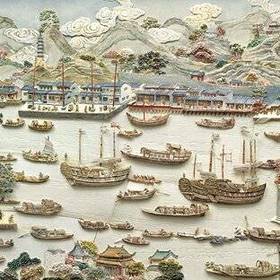
In a talk Monday, Duke University professor Sucheta Mazumdar will make the case that China's role as a major trading partner with the U.S. is not a recent phenomenon of inexpensive Chinese products being sold in Wal-Marts. Instead, it is an economic relationship that goes back more than 300 years ago to the very beginnings of the modern global economy.
"Our ideal of the Chinese economy being somehow on the periphery of the emerging global economy from the 1750s onwards is erroneous, pure and simple," said Mazumdar, an associate professor of history. "Chinese goods and a range of goods manufactured in Asia are crucial to the ways in which the global economy starts to kick more rapidly from the Industrial Revolution onwards."
Mazumdar will present her research at noon Monday, Nov. 20, in Room 229 of the Carr Building on Duke's East Campus. Her talk, "From the Slave Trade to the Opium Rush: America-China Trade in the Making of the Modern World," kicks off the History Department Colloquium, a series of talks by history faculty that are free and open to the public.
Up and down small towns throughout America people are using Chinese goods already by the 1810s, 1820s," she said, noting that the town of Stonington, Conn., had a ship trading with China at the time.
To illustrate warm relations between Chinese and American businessmen, Mazumdar gives the example of Wu Bingjian, who in 1837 invested the fortune of $500,000 with John Murray Forbes in American railroads. In 1842, Wu hosted Warren Delano, grandfather of Franklin Delano Roosevelt, at a 15-course meal in his home that lasted 13 hours and included bird nest soup, shark fins, pigeon eggs and sturgeon lips.
Mazumdar said the Opium Wars of the mid-19th century marked a new period in the global economy that included an increased pace of industrialization. As new American-manufactured textiles and porcelains became available, there was a reduced demand for Chinese goods. The dampening of trade between the two countries became most marked after 1949, but since 1979 there has been a steady increase.
"The contemporary expansion and importance of Chinese goods in the American market is really building on this longer history," she said.